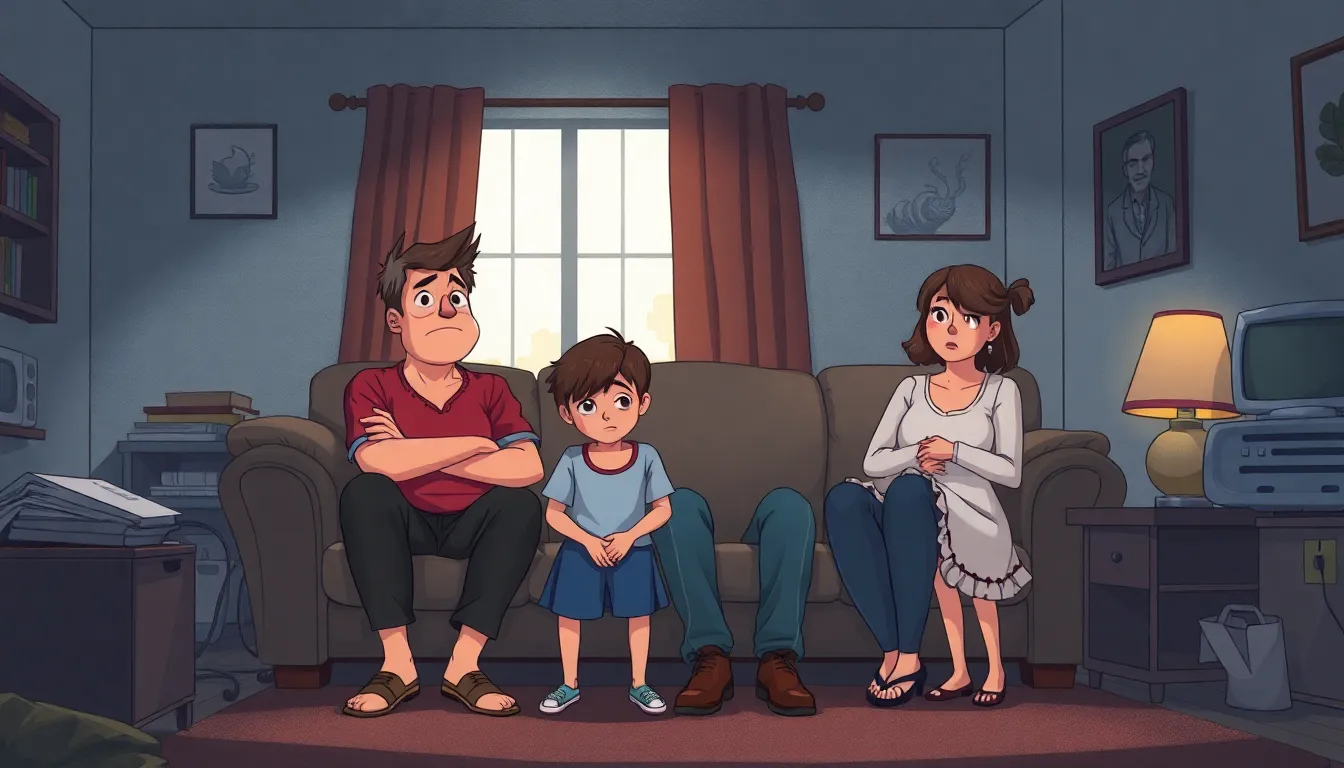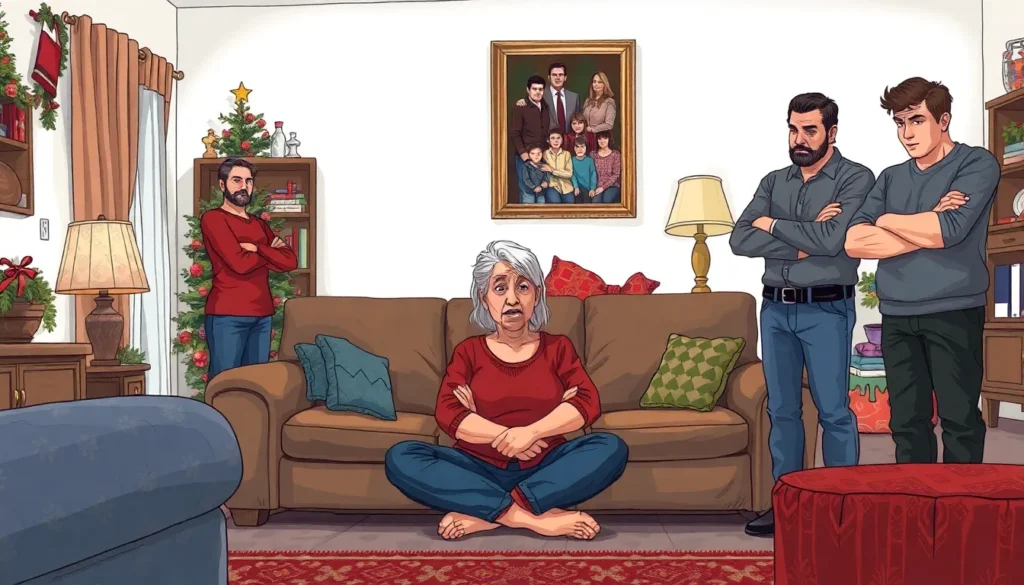Family gatherings can feel like a scene from a reality show gone wrong. Toxic family dynamics often lurk beneath the surface, turning holiday dinners into a minefield of awkward conversations and unspoken grudges. Whether it’s the judgmental aunt or the sibling rivalry that never seems to fade, these relationships can leave lasting scars.
Understanding the roots of these toxic patterns is crucial for anyone looking to break free from the cycle. It’s not just about surviving family reunions; it’s about thriving in healthier relationships. By recognizing the signs and learning how to navigate these tricky waters, individuals can reclaim their peace and even add a splash of humor to the chaos. Dive in to explore the often hilarious yet heartbreaking world of toxic family dynamics, and discover how to turn your family drama into a story worth telling.
toxic family dynamics
Toxic family dynamics create environments filled with emotional distress and conflict. These patterns often persist, making it essential to identify their traits and behaviors.
Definition and Characteristics
Toxic family dynamics refer to dysfunctional relationships that foster negativity. They manifest through manipulation, constant criticism, or emotional unavailability. Typical characteristics include lack of support, unhealthy competition, and excessive control. Emotional abuse often occurs, leading to deep-seated issues in trust and communication. Families exhibiting these dynamics may struggle to resolve conflicts, instead escalating tensions. Recognizing these traits helps individuals understand their experiences within their families. Awareness serves as the first step toward healthier interactions and emotional healing.
Common Patterns of Behavior
Many toxic families display consistent patterns of harmful behavior. One prevalent pattern is triangulation, which involves using one family member to undermine another. Frequent passive-aggressiveness creates confusion, leaving individuals uncertain about intentions. Silent treatment disables communication, leaving emotional wounds unaddressed. Additionally, blame-shifting occurs, where individuals avoid responsibility for their actions. These behaviors perpetuate a cycle of dysfunction, often leading to resentment and isolation. Identifying these patterns assists individuals in breaking free from harmful influences, paving the way for healthier relationships.
Causes of Toxic Family Dynamics


Understanding the causes behind toxic family dynamics is essential for breaking free from harmful patterns. Several factors contribute to these dysfunctional interactions.
Family History and Background
Family history often plays a significant role in established toxicity. Generational trauma shapes behaviors and beliefs, leading individuals to replicate unhealthy patterns. Background influences include parental modeling of negative coping mechanisms and unaddressed conflicts. Such lineage can normalize dysfunction, creating an environment where emotional distress thrives. For example, families may pass down learned behaviors like avoidance or conflict, exacerbating tensions over time.
Communication Styles
Communication styles within a family greatly impact dynamics. Silent treatment or harsh criticism fosters an atmosphere of fear and defensiveness. Direct expressions of feelings and thoughts become rare in these environments. Resulting misunderstandings and unresolved issues contribute to ongoing conflict. Moreover, passive-aggressive remarks undermine trust and open dialogue. Healthy communication requires active listening and empathy, both often lacking in toxic households. Without constructive communication, isolation and resentment gain a foothold.
Impact of Toxic Family Dynamics
Toxic family dynamics can significantly affect individuals’ well-being and relationships. Understanding these impacts is crucial to fostering healthier connections.
Emotional and Psychological Effects
Emotional distress arises from enduring toxic family situations, leading to anxiety, depression, and low self-esteem. Individuals often internalize criticism, resulting in negative self-image and self-doubt. Psychological trauma manifests in long-lasting issues such as Post-Traumatic Stress Disorder (PTSD). Loneliness and isolation frequently accompany these experiences as individuals withdraw to cope with overwhelming emotions. Individuals battle an internal conflict between familial loyalty and the need for personal well-being. Recognizing these effects creates a path to recovery and self-empowerment.
Effects on Relationships
Relationships outside of toxic family dynamics often suffer, as individuals carry unresolved issues into new interactions. Trust issues and fear of abandonment can inhibit meaningful connections. Strained communication leads to misunderstandings and conflict in friendships and partnerships. Individuals may reenact toxic patterns, unknowingly replicating their family dynamics in other relationships. Healthy boundaries often get blurred, as individuals struggle to assert their needs. Recognizing these effects is essential for breaking the cycle and building healthier, more fulfilling relationships.
Breaking the Cycle of Toxicity
Understanding the signs of toxic behaviors proves essential for breaking free from dysfunctional family dynamics. Awareness of how certain patterns manifest sets the foundation for healthier interactions.
Recognizing Toxic Behaviors
Identifying common toxic behaviors ensures clarity in family dynamics. Constant criticism often leaves individuals feeling inadequate. Manipulation can take many forms, including guilt-tripping and gaslighting, eroding trust. Emotional unavailability creates distance, fostering isolation within familial relationships. Triangulation, where one family member enlists another to support them against a third, exacerbates conflict. Observing these behaviors reflects the need for change to foster healthier interactions.
Strategies for Healing
Creating a path to healing involves several strategies aimed at breaking the cycle. Establishing boundaries serves as a crucial step in maintaining emotional safety. Practicing self-care reinforces personal well-being, allowing individuals time to focus on their own needs. Seeking professional support, such as therapy, provides a structured approach to navigate familial issues. Engaging in open communication enhances understanding, promoting empathy among family members. Recognizing triggers enables individuals to respond thoughtfully rather than react impulsively. Each of these strategies plays a vital role in establishing healthier family relationships.
Seeking Professional Help
Seeking professional help offers a pathway for individuals wanting to address toxic family dynamics. Therapy can provide support and strategies for healing.
Therapy Options
Various therapy options exist to tackle family toxicity. Individual therapy helps people process feelings and develop coping mechanisms. Family therapy fosters open communication among family members, facilitating understanding and resolution. Couples therapy enhances relationships by addressing dynamics between partners impacted by family issues. Group therapy creates a supportive environment where individuals can share experiences and gain insights from others facing similar challenges.
Finding the Right Professional
Identifying the right professional plays a critical role in effective therapy. Consider qualifications and specializations, focusing on therapists experienced with family dynamics and related issues. Checking reviews and testimonials can provide insight into a therapist’s effectiveness. Scheduling initial consultations helps assess compatibility and comfort with the therapist’s approach. Prioritizing a professional who listens and validates feelings enhances the therapeutic experience, promoting deeper healing and understanding.



